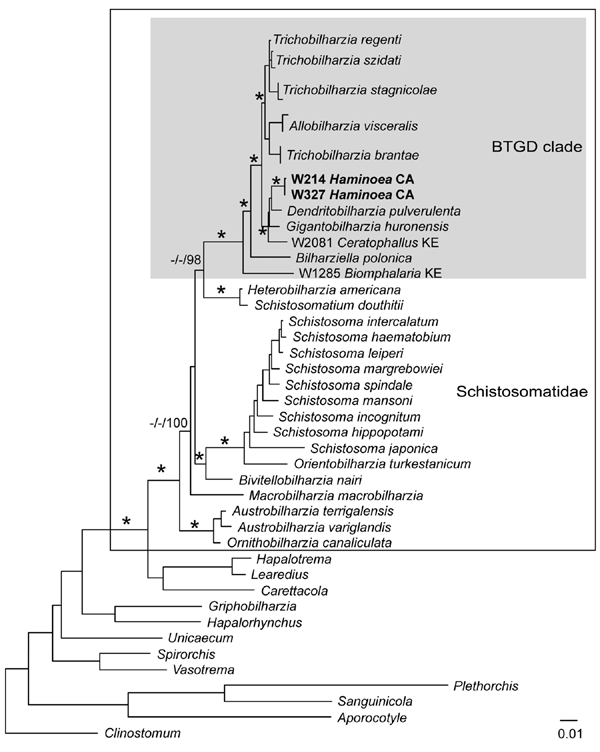Volume 16, Number 9—September 2010
Research
Cercarial Dermatitis Transmitted by Exotic Marine Snail
Figure 4

Figure 4. Maximum-likelihood phylogenetic tree based on 18S–28S rRNA sequences of schistosomes. Schistosomatids are indicated in the large box and the Bilharziella, Trichobilharzia, Gigantobilharzia, and Dendritobilharzia (BTGD) clade is indicated in the gray box. Samples in boldface are those obtained from Haminoea japonica snails. Node support is indicated by maximum parsimony (MP) and minimum evolution (ME) bootstrap values and Bayesian posterior probabilities (PPs), respectively. Asterisks indicate MP and ME bootstrap values >85 and PPs >98 and hyphens indicate no significant node support. Branch support is designated only for major clades. Scale bar indicates nucleotide substitutions per site.
Page created: August 28, 2011
Page updated: August 28, 2011
Page reviewed: August 28, 2011
The conclusions, findings, and opinions expressed by authors contributing to this journal do not necessarily reflect the official position of the U.S. Department of Health and Human Services, the Public Health Service, the Centers for Disease Control and Prevention, or the authors' affiliated institutions. Use of trade names is for identification only and does not imply endorsement by any of the groups named above.